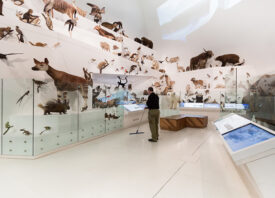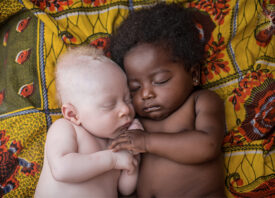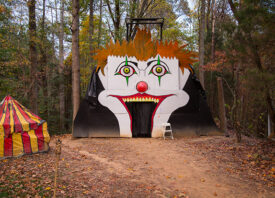Search this site
Artist Explores Her Unusual Skin Condition In Mesmerizing Photographs
Sugarplum
Index
Brooklyn-based photographer Ariana Page Russell has dermatographia, a skin condition that leaves her hypersensitive to touch, enabling her to lightly scratch her flesh to create raised welts in deliberate, elegant patterns. Russell’s mesmerizing images serve in part to catalog the invisible and nonverbal powers of the body. Where the intangible markers of human touch depart skins of others within moments, Russell preserves them, first as scratches and then as photographic evidence.
After giving shape to to these substantial but impermanent markings, she photographs them; sometimes, she collages these images and constructs homemade temporary tattoos. In these unusual adornments, flesh sits upon flesh, ornamenting itself in visceral and emotive ways. We recently asked Russell, who runs the blog Skin Tome, to tell us more about the work.

Radiate
Can you tell us a little bit more about dermatographia? How did you first come up with the idea to make this kind of body art?
“Dermatographia, or skin writing, is a condition in which one’s immune system releases excessive amounts of histamine, causing capillaries to dilate and welts to appear (lasting about 30 minutes) when the skin’s surface is lightly scratched. This allows me to painlessly draw on my skin with just enough time to photograph the results. I started doodling on my skin and photographing it back in 2003. When I showed people the photographs, they loved them, and encouraged me to continue the exploration of drawing on my skin.”

Cord
To some extent, every skin tells an intimate narrative—through scars, marks, and pigmentation— but you use your body as a text in a very literal way. What words do you choose and why?
“The few times I use words or letters, it’s not meant to be read literally. In Index, I’m writing free association text inspired by a dream I had, as if my body is communicating in its own way, in its own language. In ooooo, I repeat the letter ‘o’ over and over so that it forms a sound. Same thing with rrrrr—the letter makes a sound when it’s repeated like that. I think our bodies communicate abstractly, through sounds and sensations, so I wanted to reference that with the skin writings.”

ooooo
You also make temporary tattoos. Can you explain this process?
“I make photographs of my flushed skin and manipulate the colors to make reds and pinks stand out. Then I use the photographs to make collages (like Blanch) and scan those into the computer. With these images I make temporary tattoos with a special paper and adhesive (it comes as a kit to make your own tattoos at home). They are temporary tattoos made from photographs of skin.”

Tuck

Blanch

Net
Your work vanishes 30 minutes after you create it, save for the photographs. Is there something in the fleeting nature of the work that compels you?
“Everything is fleeting, really. It makes me think of my own temporary existence, and how much things change over the course of a lifetime. My skin looks different every year as I age, and my color changes with the seasons and exposure to sun.”

Flora
How has the work been received?
“It’s been great! One awesome thing about making art with my dermatographia is that I’ve been able to form a community of people who also have it or other skin conditions. Once my work started reaching a larger audience, I received hundreds of emails about dermatographia—how to treat it, what causes it, or just to say thank you for putting it out in the public eye. Due to this, I started a blog called Skin Tome where others can share about their own skin and inspiration. It’s been hugely rewarding and the best part of my art-making thus far. I’m accepting submissions from people who are inspired by skin and want to share their story.”

After Party
Russell currently has a piece on view in Up, Close & Personal, a group show curated by collector and photographer Ruben Natal-San Miguel at Fuchs Projects in Bushwick, Brooklyn through May 13th. Featuring over 30 contemporary photographers, the collection explores the relationships that these artists have to their intimate, personal bodies of work—the idea, the approach, the process along the way.





